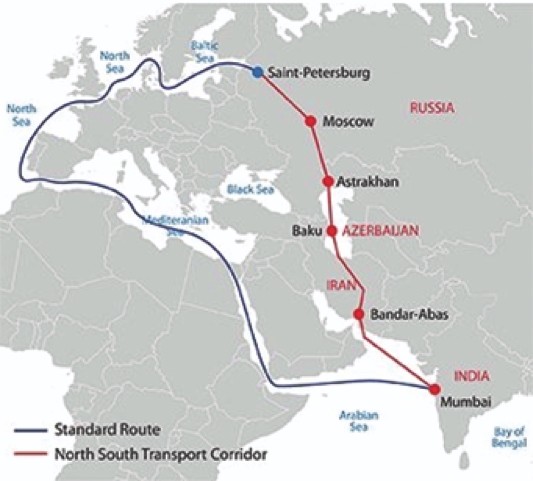September 15, 2023

There was once such a link that allowed the Americans to funnel a huge amount of war goods to the Soviet Union in World War II, one of the most important supply links of that war. But that rail line was severed by Armenia when it became independent of the Soviet Union in 1991.
Iran has been talking about the new link, which will go through Azerbaijan instead of Armenia, for a third of a century. But nothing came of all the talk until Russia invaded Ukraine last year and found many of its trade links blocked by Europe and the United States. Suddenly Russia wanted to negotiate with Iran over the rail link. But Iran’s relations with Azerbaijan have soured in the meantime and it isn’t clear how Azerbaijan feels about being the facilitator for more Russian-Iranian trade.
On May 17, Russian President Vladimir Putin and Iranian President Raisi met via video link and watched as their transport ministers sat at a table in Tehran and signed the document, which was described as a “contract,” not as just a memorandum of understanding, which would have involved no obligation.
The 162-kilometer (100-mile) rail link will connect Rasht, which lies on the Caspian coast, with Astara, which is one of the Iran-Azerbaijan border posts. It would be part of Iran’s so-called North-South Transport Corridor project.
Iran has long touted the rail link as being of huge importance. Officials have said it would vastly cut the distance for freight going from India to Europe and could thus rival the trade role of the Suez Canal. It would indeed make the distance between India and Russia much less, but it would not shorten the distance or time for trade with Western or Central European countries.
Furthermore, Russia uses a different width for its railroads than the rest of the world. So, freight from India will have to be unloaded from ships in Chabahar, loaded on rail cars there, then unloaded again at Astara and put on Russian freight cars, and go through the same shift if the freight is to leave Russian rails for European countries.
In other words, the rail link will help trade between South Asia on the one hand and cities in Russia and Central Asia on the other, but not be significant otherwise.
The Islamic Republic said the rail link would help Iran re-claim its ancient role as a transit hub between Europe and Asia. But that won’t be true unless Russia buys an awful lot of goods from South Asia, which isn’t likely.
Iran said the rail link would cost $1.6 billion. It spoke of Russia financing construction. But it neglected to say how much Russia would pay or whether Iran would be expected to pay that money back. If Iran doesn’t pay back the money, Russia would end up owning an Iranian railroad, which wouldn’t appear to be politically acceptable within Iran.
Russia hasn’t said where it would get the capital, given its current financial strictures.
Just 10 days after the railroad deal was signed, Iraq officially launched a $17 billion project to develop its road and rail infrastructure, including a road from the port of Faw on the Persian Gulf coast to Turkey, which officials said would turn Iran into a transit hub by shortening the travel time between Asia and Europe, a development some said would rival the Suez Canal. No one was seen to observe that it would also pose a challenge to Iran’s North-South Transport Corridor project.
